THE THEATRE ORGAN
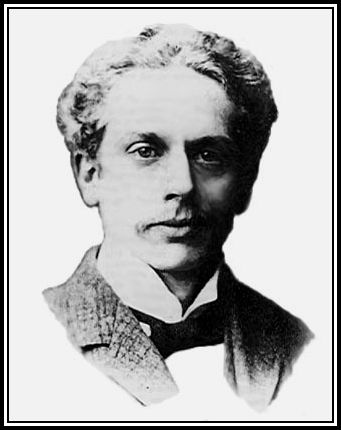 Robert Hope-Jones (1859-1914), Father of The Theatre Organ
Robert Hope-Jones (1859-1914), Father of The Theatre Organ
PART TWO: BUILDERS OF THE THEATRE ORGANS
THIS PAGE IS WRITTEN IN CONJUNCTION WITH GLEN TWAMLEY (FRIENDS OF BEER WURLITZER)
–oOo-
PAGE FIVE: WURLITZER ORGANS IN THE NETHERLANDS
THE TUSCHINSKI THEATER ORGAN
-oOo-
THE FIRST WURLITZER THEATRE ORGAN EXPORTED
Unlike the case in the U.S. and the U.K., Theatre Organs were not installed in many European cinemas. However, it is of interest to the note that the first Wurlitzer Organ to be exported to Europe was on the 29th December, 1920 and installed at the Cinema de la Monnaie in Bruxelles,
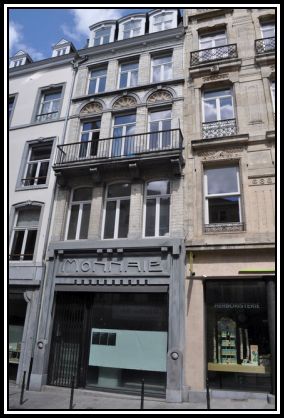 The Facade of the building that was once the Cinema de la Monnaie (from Cinema Treasures)
The Facade of the building that was once the Cinema de la Monnaie (from Cinema Treasures)
The Wurlitzer Organ installed at the Cinema de la Monnaie was of the Style 135A, which meant that it had 2-manuals, 4 ranks, 4-tuned percussions, 17 traps and a piano console. Traps consist of the un-pitched organ percussions (i.e. bass drum, snare drum, tambourine, castanets, triangle, wood block, Chinese gong and sleigh bells etc) and the letter A indicated that the organ was also equipped with an automatic player mechanism. Apparently no organ of this style was imported into the U.K.
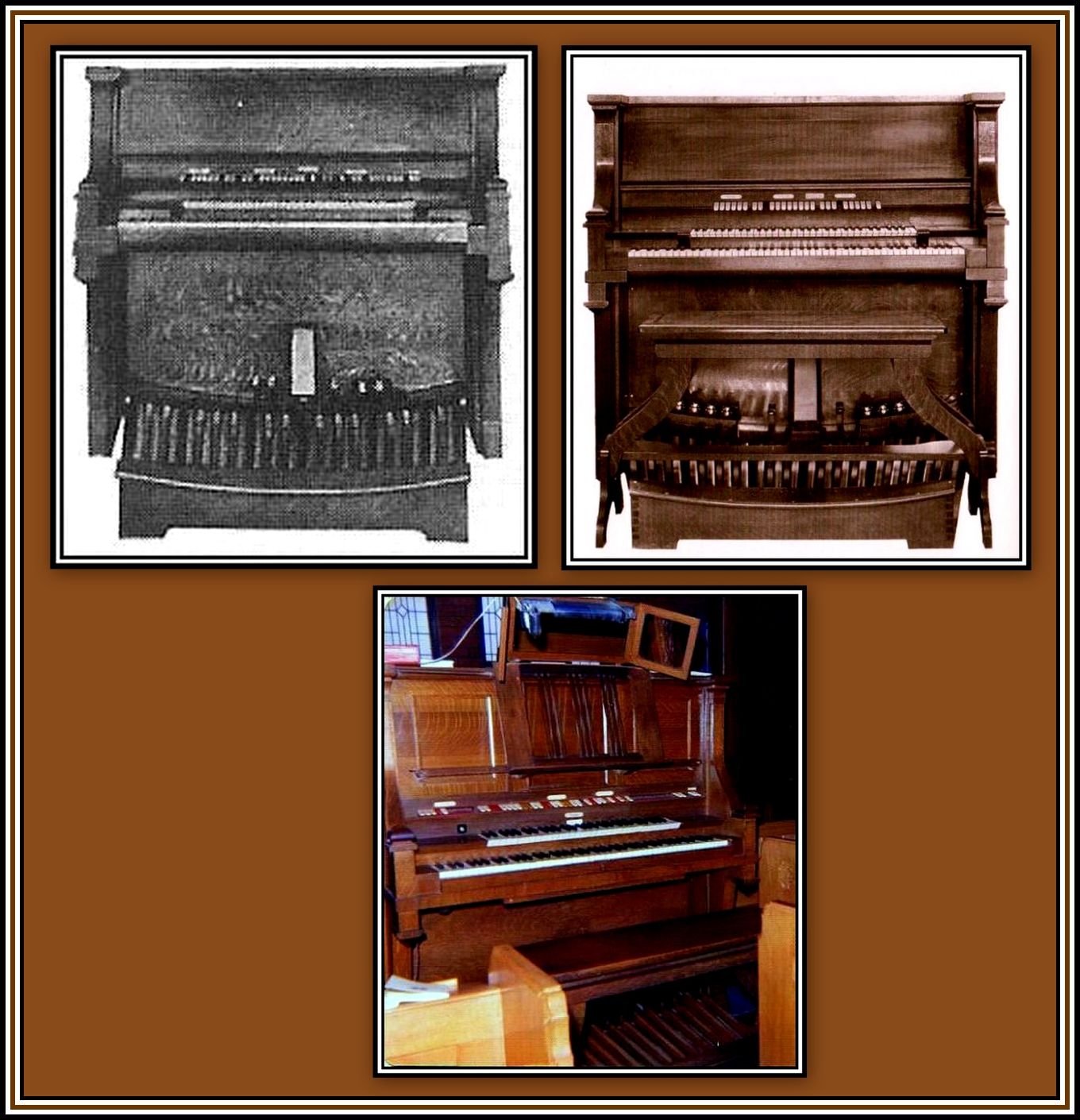 Top Left: Wurlitzer Organ Style 135 (The New York City Chapter of the American Guild of Organists); Top Right: Wurlitzer Organ Style 109, which was the predecessor of Style 135; and Bottom: Wurlitzer Organ Style 160, Opus 1748 and was installed in a cinema in Nelson, New Zealand (This photograph appears at the R. Jelani Eddington website)
Top Left: Wurlitzer Organ Style 135 (The New York City Chapter of the American Guild of Organists); Top Right: Wurlitzer Organ Style 109, which was the predecessor of Style 135; and Bottom: Wurlitzer Organ Style 160, Opus 1748 and was installed in a cinema in Nelson, New Zealand (This photograph appears at the R. Jelani Eddington website)
Click here to hear a Wurlitzer Organ Style 135 being played
-oOo-
The organ did not remain in place at the Cinema de la Monnaie for long, as the reader will learn shortly.
-oOo-
Apparently the Cinema de la Monnaie underwent a number of name changes throughout its existence and was also used as a venue for theatre productions. The last live production at the Cinema took place in 1969 when Jacques Brel appeared in a production of Man of La Mancha. Seemingly Mr. Brel had been given permission to freely adapt the songs of this musical into French. With the conclusion of this production, the theatre was closed permanently and later the auditorium was demolished leaving only the facade (shown above).
Click here to hear Jacques Brel sing La Quete (The Impossible Dream)
-oOo-
THEATER TUSCHINSKI
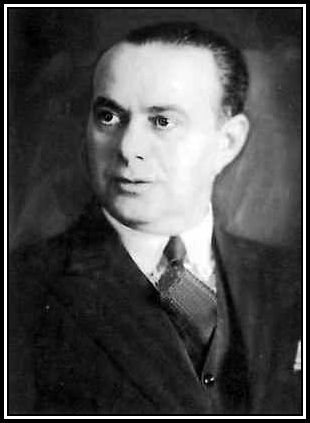 Abraham Icek Tuschinski (1931)
Abraham Icek Tuschinski (1931)
Abraham Icek Tuschinski (Polish: Tuszynski) was born in Brzeziny in Poland in 1886. He became a tailor, but decided to leave and emigrate to the U.S. However, in 1906 while en route, he arrived in Rotterdam and decided to settle and went on to open four cinemas, which proved successful. Mr. Tuschinski expanded his cinema enterprise to Amsterdam and on the 28th October, 1921 opened what is perhaps one, if not the most glorious cinema in the world, the Theater Tuschinski.
-oOo-
The Theater Tuschinski was based on plans drawn up by the architect, Heyman L. de Jong, with its interior decoration designed by Pieter den Besten and Jaap Gidding. The result is a magnificent building where a number of different styles, including Art Deco, Gothic, Jugendstil and Amsterdamse School, have been skillfully blended to produce an architectural marvel that is unique in cinema architecture.
In constructing this cinema, Mr. Tuschinski introduced a number of new innovations including good ventilation throughout the auditorium and the ability to maintain it at a constant temperature. In addition, he was determined to give his patrons a taste of elegance and luxury, and to achieve this, he spared no expense. It is said that the building of the cinema cost him in the region of four million florins.
-oOo-
The exterior façade features a mixture of styles with two imposing towers that rise up on each side and terminate in a round dome and light fixture.
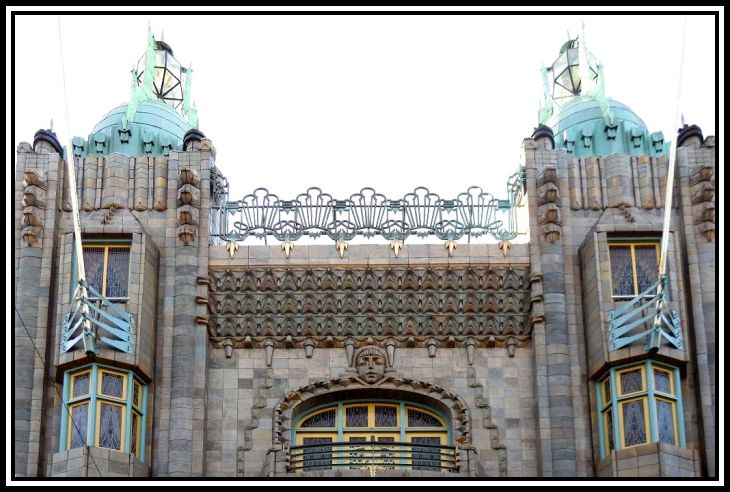 This photograph appears with permission of the photographer, Jacques Lasserre
This photograph appears with permission of the photographer, Jacques Lasserre
Two Gothic-style lamps are present on either side of the canopy over the main entrance; while
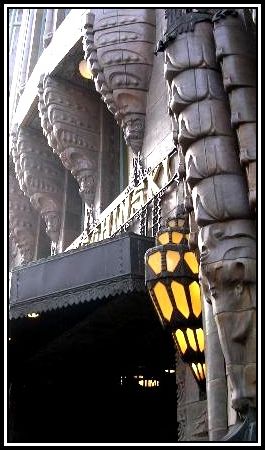 This photograph was taken by Paintmonkey61 (Tripadvisor)
This photograph was taken by Paintmonkey61 (Tripadvisor)
the remainder of the façade features a series of ornate decorated windows and elaborate grill- and brickwork.
This photograph was taken by Joe Ay (Tripadvisor)
 This photograph was taken by Brett92 (Tripadvisor)
This photograph was taken by Brett92 (Tripadvisor)
-oOo-
The main foyer was gloriously decorated in red and golds as the predominant colours employed. There are paintings of birds of paradise and peacocks adorning the walls together with a bar of bronze and marble and a hand-made carpet from Morocco.
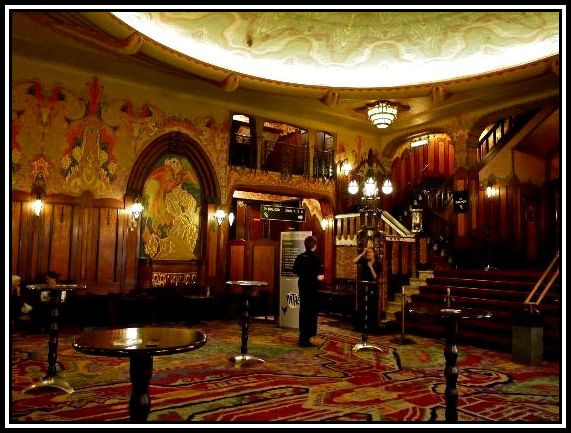 The Main Foyer – this photograph was taken by shoggypops (Tripadvisor)
The Main Foyer – this photograph was taken by shoggypops (Tripadvisor)
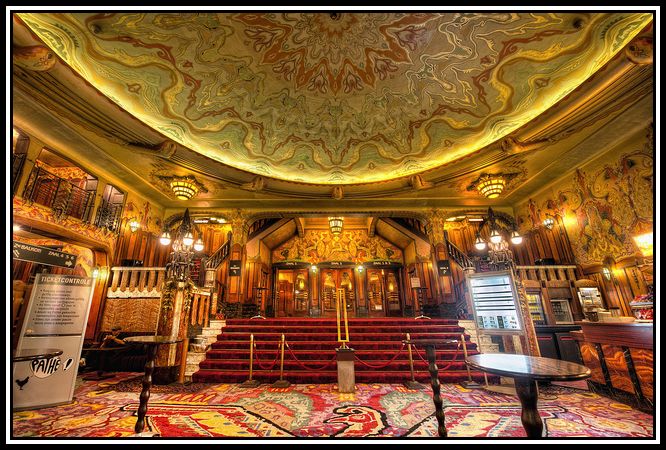 Main Foyer & Entrance to the Grand Auditorium – photograph taken by Bernardo Contopoulos
Main Foyer & Entrance to the Grand Auditorium – photograph taken by Bernardo Contopoulos
-oOo-
At the time of its opening, the Tuschinski Theater consisted of a main auditorium where films, live shows and concerts were presented, a Cabaret-Dinner Club named La Gaité, a Japanese tea room, a Moorish suite and elegant foyers. Today, the tea room and Moorish suite have been combined to form a smaller auditorium for the screening of films.
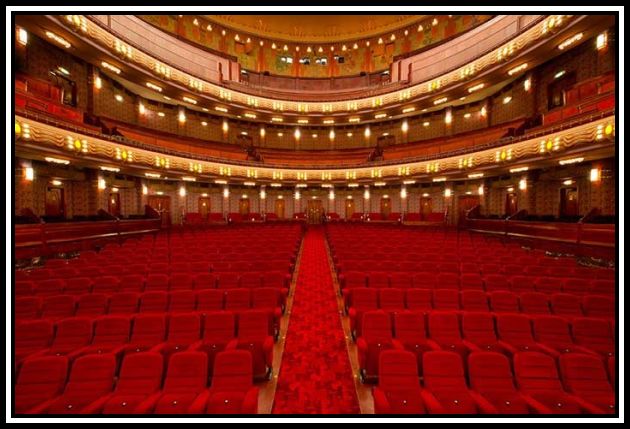 The Main Auditorium seen from The Stage
The Main Auditorium seen from The Stage
The seating capacity of the main auditorium at this time was for some 1,600 patrons seated in the orchestra stalls, boxes, balcony and upper circle. Today, the main auditorium seats 735 since larger seats have been installed and the upper circle is not currently in use.
Over the years, the main auditorium has been the venue of many concerts given by national and international entertainers. There was a 16-piece orchestra in place until 1969 when it was finally disbanded.
-oOo-
Evidently Mr. Tuschinski was aware of the installation of Theatre Organs in many American Picture Palaces and was determined to have such an instrument present in his new theatre for its opening. However, there proved to be insufficient time for The Wurlitzer Company to ship such an instrument to The Netherlands. Undaunted, once he heard about the Theatre Organ installed at the Cinema de la Monnaie in Bruxelles, he apparently set off with the aim of purchasing to it.
It is said that Mr. Tuschinski offered the owners of this Theatre Organ a huge sum of money, which they accepted. The organ was removed from its original installation and transported to Amsterdam and was in place for the cinema’s opening.
For the opening night, Mr. Tuschinski had two organists present: Mr. Stevenson from New York City and Mr. Jan Jos van Beers from the Cinema de la Monnaie in Bruxelles (if any reader knows Mr. Stevenson’s Christian names, please let me know).
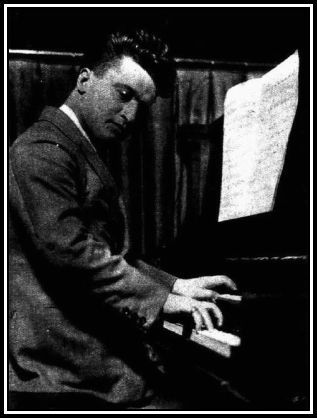 Jan Jos van Beers – This photograph appears in the magazine, Cinema en Theater, No. 74 and was provided by Mr. Paul van Let of the Nederlandseorgelfederatie (NOF)
Jan Jos van Beers – This photograph appears in the magazine, Cinema en Theater, No. 74 and was provided by Mr. Paul van Let of the Nederlandseorgelfederatie (NOF)
Mr. Van Beers became the resident organist and continued in this position until 1922 when the Dutch organist, Pierre Palla, was appointed. Mr. Palla made a number of recordings playing this organ and remained at the theatre until 1928. Together with the orchestra leader, Max Tak, they were responsible for musical interludes and for accompanying the silent films being screened. Although this organ was small and was unlikely to have filled the auditorium, it evidently proved to be a successful addition.
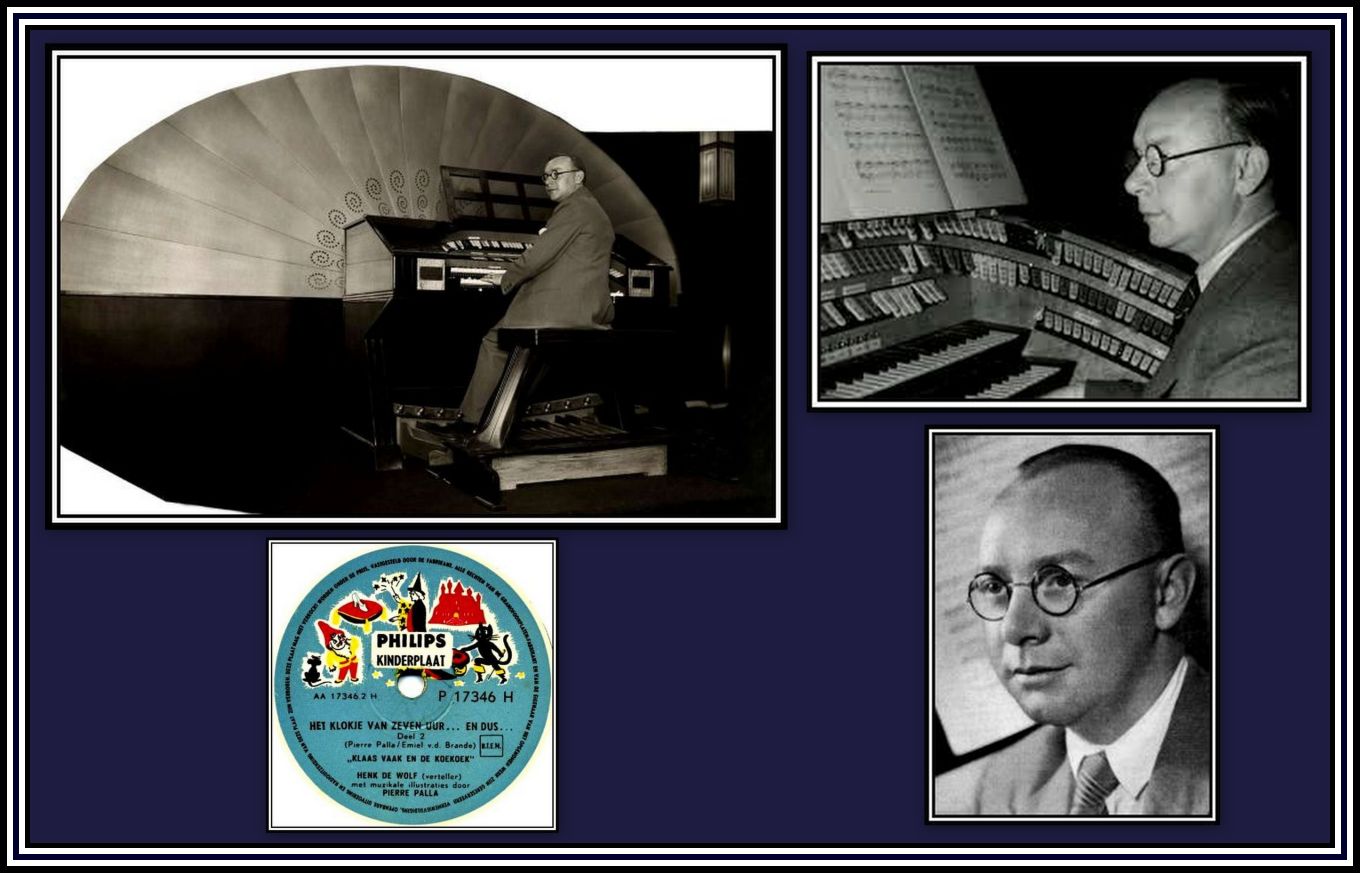 Pierre Palla – these photographs appear at Kanaalridder; Top Left: at Cafe Hollandais, Den Haag
Pierre Palla – these photographs appear at Kanaalridder; Top Left: at Cafe Hollandais, Den Haag
In 1923, Mr. Tuschinski replaced this organ with a newly built and imported Wurlitzer Organ Style 160 (Opus 714) with 2 manuals and 6 ranks. The new organ also had a piano console with an extra keyboard, a foot pedal and registers. The organ chambers and pipes were housed beneath the stage and underneath the wooden floor of the orchestra pit. They sat on a concrete floor that help project its sound upwards and appear to radiate from the stage. In the 1980s, the orchestra pit was closed off, but it can be opened to reveal grids that allow the sound to be directed upwards.
Pierre Palla playing the second Theatre Organ (Style 160, Opus 714) at sometime between 1926 and 1928 (This recording appears here with the permission of Mr. Peter Koppe of the Nederlandse Orgel Federatie (NOF)
Once the first organ was removed from the Theater Tuschinski, Mr. Tuschinski had it installed at the Grand Theater Rotterdam, which was also one of his cinemas.
In 1940, this organ was rebuilt by the Strunk Organ Company and a new 4 Manual console, designed by Joop Geesink, was added and the number of ranks was increased to 10. In addition, a piano console was added to the organ at this time. The Strunk-Wulitzer Theatre was opened to the public by the organist, Cor Steyn (Steijn) who had acted as an advisor during the rebuilding process.
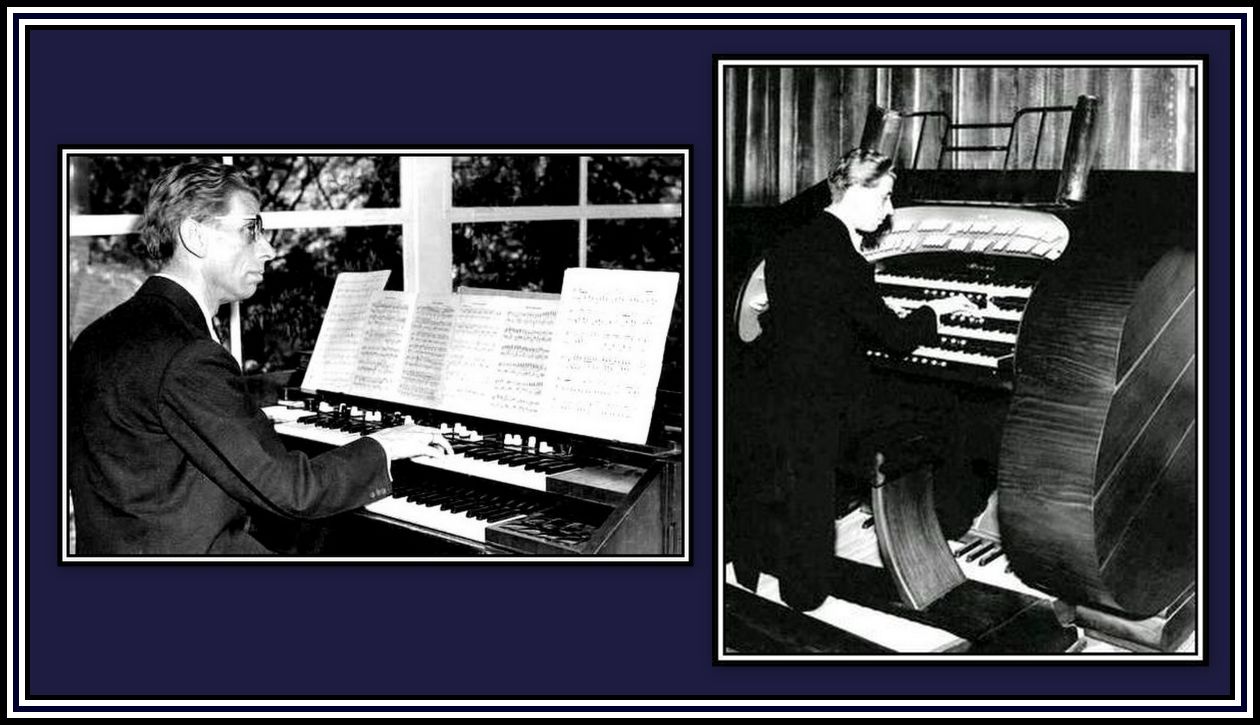 Cor Steijn – These photographs appear at the Hammond Organ NL Website
Cor Steijn – These photographs appear at the Hammond Organ NL Website
Click here to hear Cor Steijn playing in a Newsreel sequence
Click here to hear Cor Steijn play the Strunk Organ (4 manuals and 17 Ranks) of the City Theatre, Amsterdam
-oOo-
With the outbreak of the Second World War and the invasion of The Netherlands on the 10th May, 1940, Rotterdam became the target of heavy bombing attacks. This resulted in the destruction of Mr. Tuschinski’s cinemas there. Following the occupation of The Netherlands by the Germans and the rise of antisemitism, the name Tuschinski was removed from the Theater, which was then changed to the Tivoli. Tragically, in July 1942, Mr. Tuschinski and his family together with fellow directors of his business were sent to the Westerbork Detention Camp and from here were transported to the camp at Auschwitz where they were killed on the 17th September, 1942. A brutal and sad end to a man who had worked to bring a sense of luxury and joy to his patrons.
-oOo-
Once the war ended, on the 29th July, 1945, the theatre once again became the Theater Tuschinski.
-oOo-
After the war, the maintenance of the organ was provided by several companies: firstly, by Fonteyn en Gaal and followed by Kaat en Tijhuis.
In 1946 and for almost 30 years, Jan Mekkes was the organist-in-residence who also served for a while as the orchestra leader. In 1969, once the orchestra was disbanded, Mr. Mekkes was responsible only for playing the organ. At some time, Rene de Rooij who had been the organist at the City Theatre in Amsterdam joined the staff of the Theater Tuschinski and both organists played the organ at the start of the daily seances and during the intermissions.
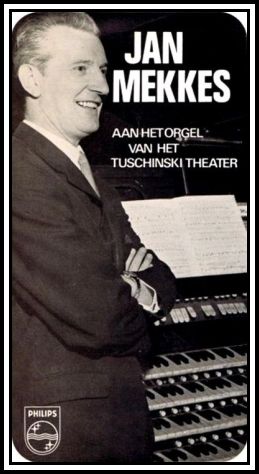 This photograph of Jan Mekkes appears with the permission of Mr. Peter Koppe of the Nederlandse Orgel Federatie (NOF)
This photograph of Jan Mekkes appears with the permission of Mr. Peter Koppe of the Nederlandse Orgel Federatie (NOF)
For a number of years, Mr. Mekkes gave organ concerts to members of the Nederlandse Orgel Federatie (NOF). Later, through an arrangement between the NOF and the Theater, organ concerts were opened to the public and a number of national and international theatre organists have since been invited to play. At this time, the NOF became responsible for the maintenance and upkeep of the organ.
Between 1998 and 2002, the Theater Tuschinski was restored by the new owners, Pathé. During this time, the organ was removed from the building and the various components were either restored or rebuilt by a group of conscientious people including volunteers, members of the NOF and members of the company of Kaat en Tijhuis.
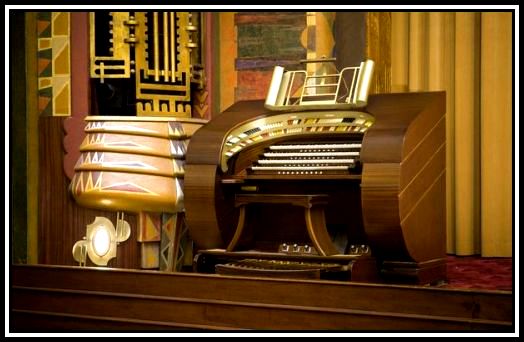 The Theater Tuschinski Organ Today
The Theater Tuschinski Organ Today
Click here to hear the Theater Tuschinski Organ being played
Click here to hear the Theater Tuschinski Organ being played
Click here to hear the Theater Tuschinski Organ being played
The organ was played before every performance until 1974, after which it was silent, but remained in place. However, it was played to accompany the screening of several silent films in 1996 as part of the theatre’s 75th Anniversary celebration.
Today, the organ is played at concerts given by both national and international organists and whenever silent films are screened. These events are sponsored by the NOF.
 Top: Mr. Len Rawle appeared here in 2012; and Bottom: view of the Main Auditorium in 2014 while Mr. Donald MacKenzie appeared. This photograph appears with the permission of Mr. Paul J.A. van Let of the Nederlandse Orgel Federatie (NOF)
Top: Mr. Len Rawle appeared here in 2012; and Bottom: view of the Main Auditorium in 2014 while Mr. Donald MacKenzie appeared. This photograph appears with the permission of Mr. Paul J.A. van Let of the Nederlandse Orgel Federatie (NOF)
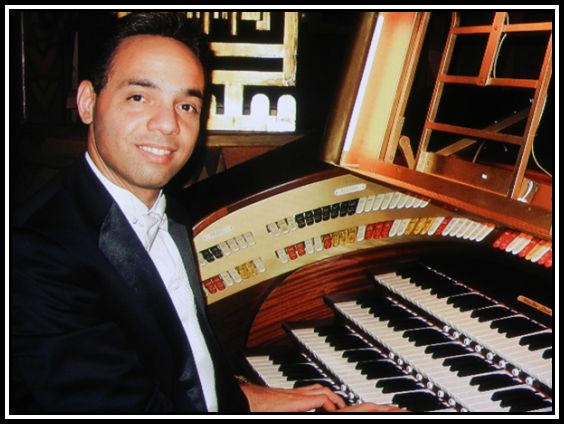 Jelani Eddington at the Tuschinski Theater Organ – This photograph appears with the permission of Mr. Peter Koppe of the Nederlandse Orgel Federatie (NOF)
Jelani Eddington at the Tuschinski Theater Organ – This photograph appears with the permission of Mr. Peter Koppe of the Nederlandse Orgel Federatie (NOF)
Click here to hear Mr. Eddington play the Wurlitzer Organ at Grace Baptist Church, Sarasota, Florida
-oOo-
Click here to see the premier of The Battle of Britain at the Theater Tuschinski in 1969
and Click here to see the premier of Soldat van Orange in 1977
-oOo-
MEMORIES OF AMSTERDAM & THE THEATER TUSCHINSKI
I lived in Amsterdam for a number of years during the 1970s and worked at the Wilhelmina Gasthuis (Queen Wilhelmina Hospital), when it was still one of the Hospitals associated with the University of Amsterdam.
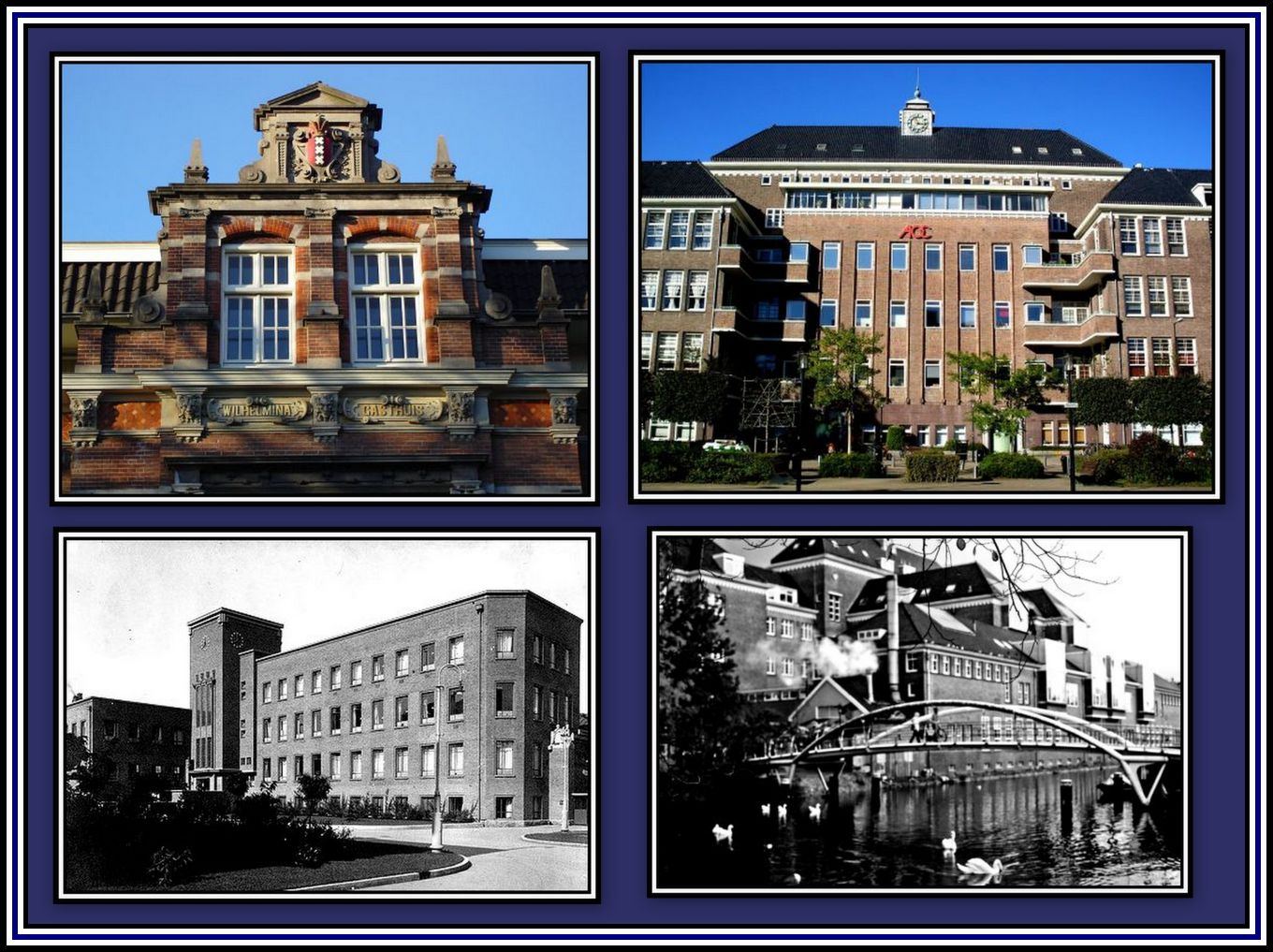 Buildings of the Wilhelmina Gasthuis
Buildings of the Wilhelmina Gasthuis
Click here to get a glimpse of the former hospital
I remember going to the Theater Tuschinski on a number of occasions. I could not believe my eyes when I first saw it. I had not been in such a glorious cinema before. I was very impressed with the unusual design of the exterior of the building and was told that part of the design mimicked a number of insects!
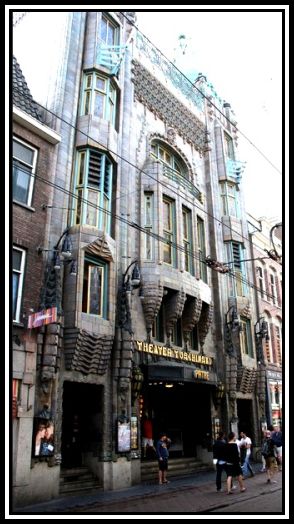 Theater Tuschinski – this photograph was taken by Natalie R (Tripadvisor)
Theater Tuschinski – this photograph was taken by Natalie R (Tripadvisor)
What struck me most about the Theater Tuschinski was its remarkable architecture and decor – in other words, everything about it! I had never seen anything resembling it before. Seeing the building was a unique experience and was truly breathtaking!
I remember being amazed at the splendour of the foyer. Its design was remarkable and almost unbelievable! It had been designed in an Art Deco style, but it was a style that I had never seen before that gave it an Asiatic feel! Everywhere one was inundated with exotic designs in reds and golds. The carpet was thick, multicoloured and with a unique design. The walls were remarkable for their decoration, which I seem to remember were of various birds and butterflies amongst other designs. I recall that there was a bar on the right side of the foyer and that there were several steps up to the doors that led to the main auditorium.
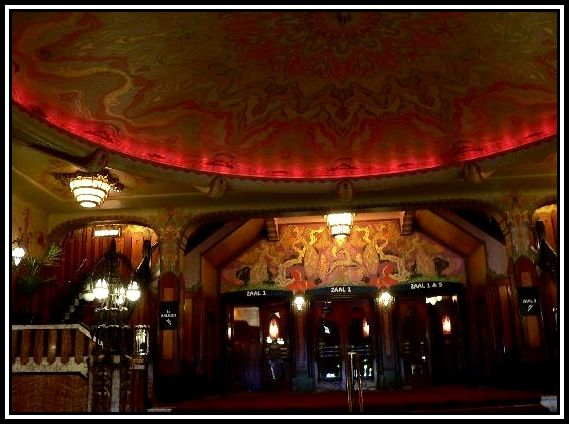 The Main Foyer – This photograph was taken by Brett92 (Tripadvisor)
The Main Foyer – This photograph was taken by Brett92 (Tripadvisor)
The main auditorium was highly decorative with a very high ceiling. The ceiling design was spectactular and had four long lighting fixtures that stretched from a large lamp in the centre of the ceiling rondel and each terminating in a smaller lamp. The design gave the lighting a spider-like appearance.
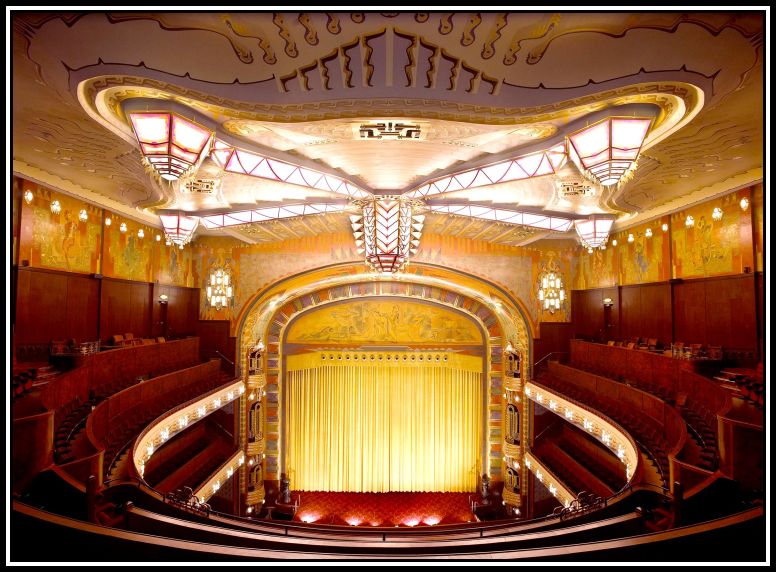 The Ceiling of the Main Auditorium
The Ceiling of the Main Auditorium
The decor of the auditorium was spectacular and breathtaking in its impact. The predominant colours were red and gold. At the far end of the auditorium was the stage, which was surrounded by a proscenium-cum-slay of a unique design that included highly decorative grill work.
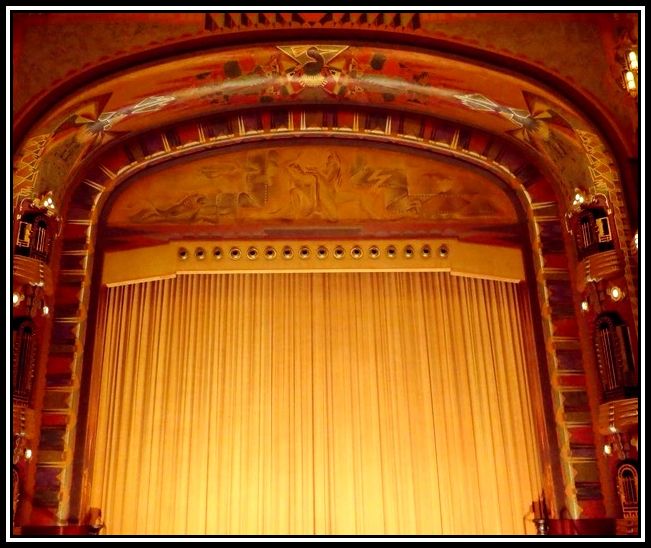 The Proscenium – This photograph was taken by Pev1982 (Tripadvisor)
The Proscenium – This photograph was taken by Pev1982 (Tripadvisor)
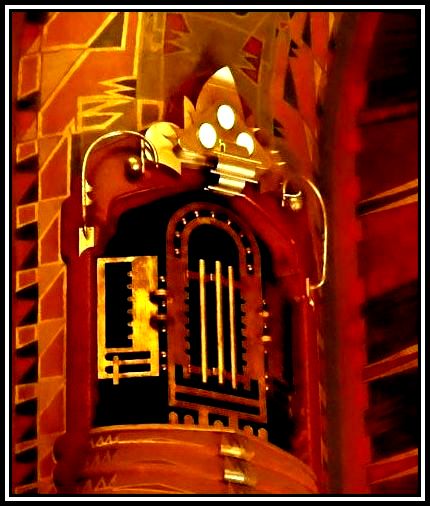 Detail of the Splay showing its Grillwork
Detail of the Splay showing its Grillwork
The seating throughout the auditorium was covered with red plush material. Along either side of the auditorium, just a few steps up from the orchestra stalls, were a number of boxes that could be entered through individual doors that opened into a passage leading back to the foyer. Above the boxes was the balcony and the upper circle. Covering the side walls between the upper circle and the ceiling were a series of remarkable wall murals.
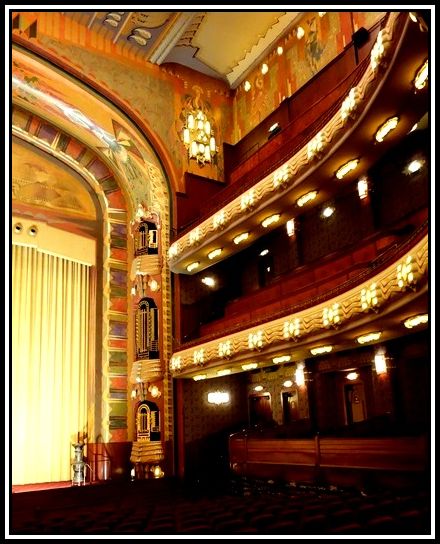 The Main Auditorium showing the levels of seating – This photograph was taken by Gregf11 (Tripadvisor)
The Main Auditorium showing the levels of seating – This photograph was taken by Gregf11 (Tripadvisor)
 The Main Auditorium showing The Boxes, The Circle & The Splay
The Main Auditorium showing The Boxes, The Circle & The Splay
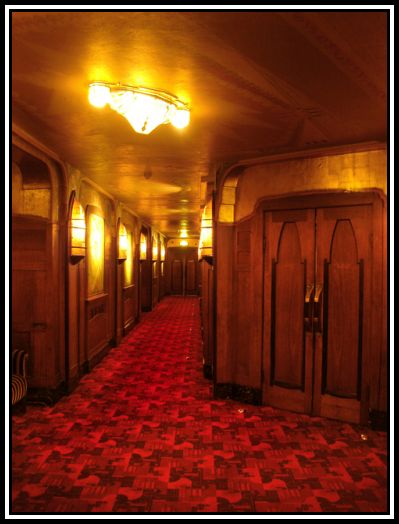 Passageway showing doors to the Auditorium (this photograph was taken by Roloff)
Passageway showing doors to the Auditorium (this photograph was taken by Roloff)
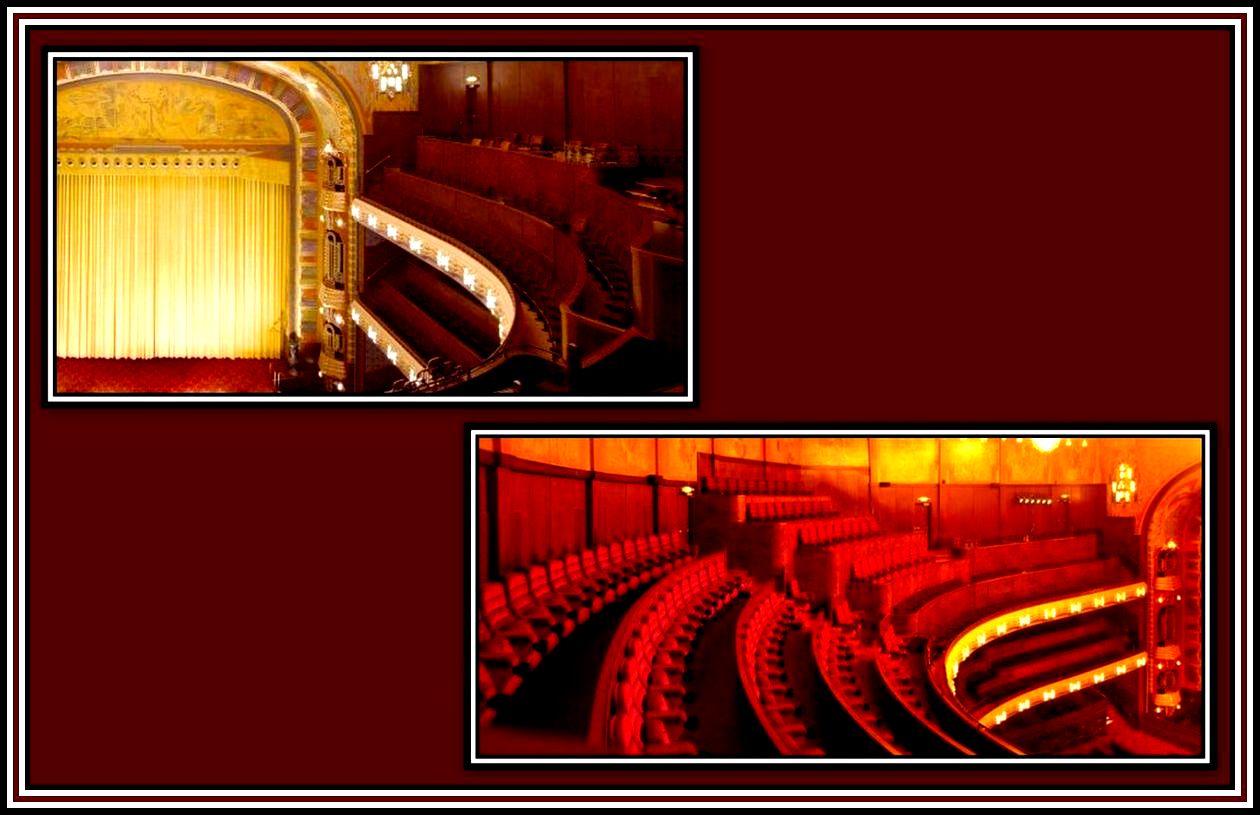 The Upper Circle: Top, as it was; and Bottom, as it is (this photograph was taken by Roloff)
The Upper Circle: Top, as it was; and Bottom, as it is (this photograph was taken by Roloff)
Throughout the foyer and the auditorium, I recall remarkable Art Deco-style light fittings, numerous styles of lamps, decorative door handles and other accessories that added to the exotic and period feel of the building.
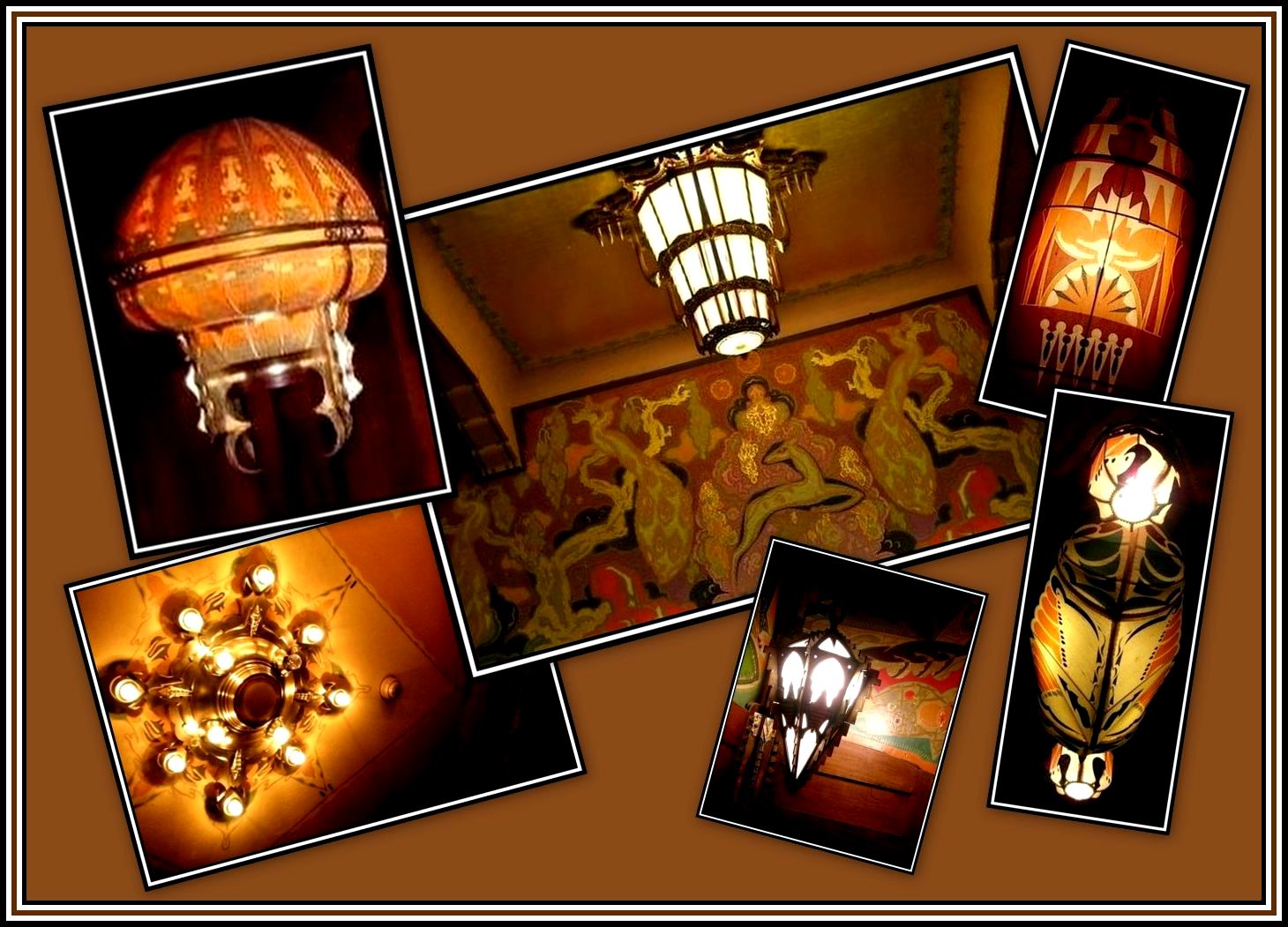 Various Lamps in the Theater Tuschinski
Various Lamps in the Theater Tuschinski
I also remember that there were many spectacular murals present in both the main auditorium and the foyer, a number of which representing butterflies.
-oOo-
I do not know if the presentation of films in The Netherlands has changed since I lived there, but it was the habit of cinema owners to have an interval in the middle of the film. I had not experienced such a break before unless the film was of three hours or longer in duration and an interval or entr’acte, as some like to call such intermissions. was woven into the film. Naturally, such a break gave the patrons the necessary time to buy ice cream and drinks and to visit the toilets. I remember too that at the Tuschinski Theater a collection for a charity was taken-up during this time. I have to admit that I never got used to these intermissions.
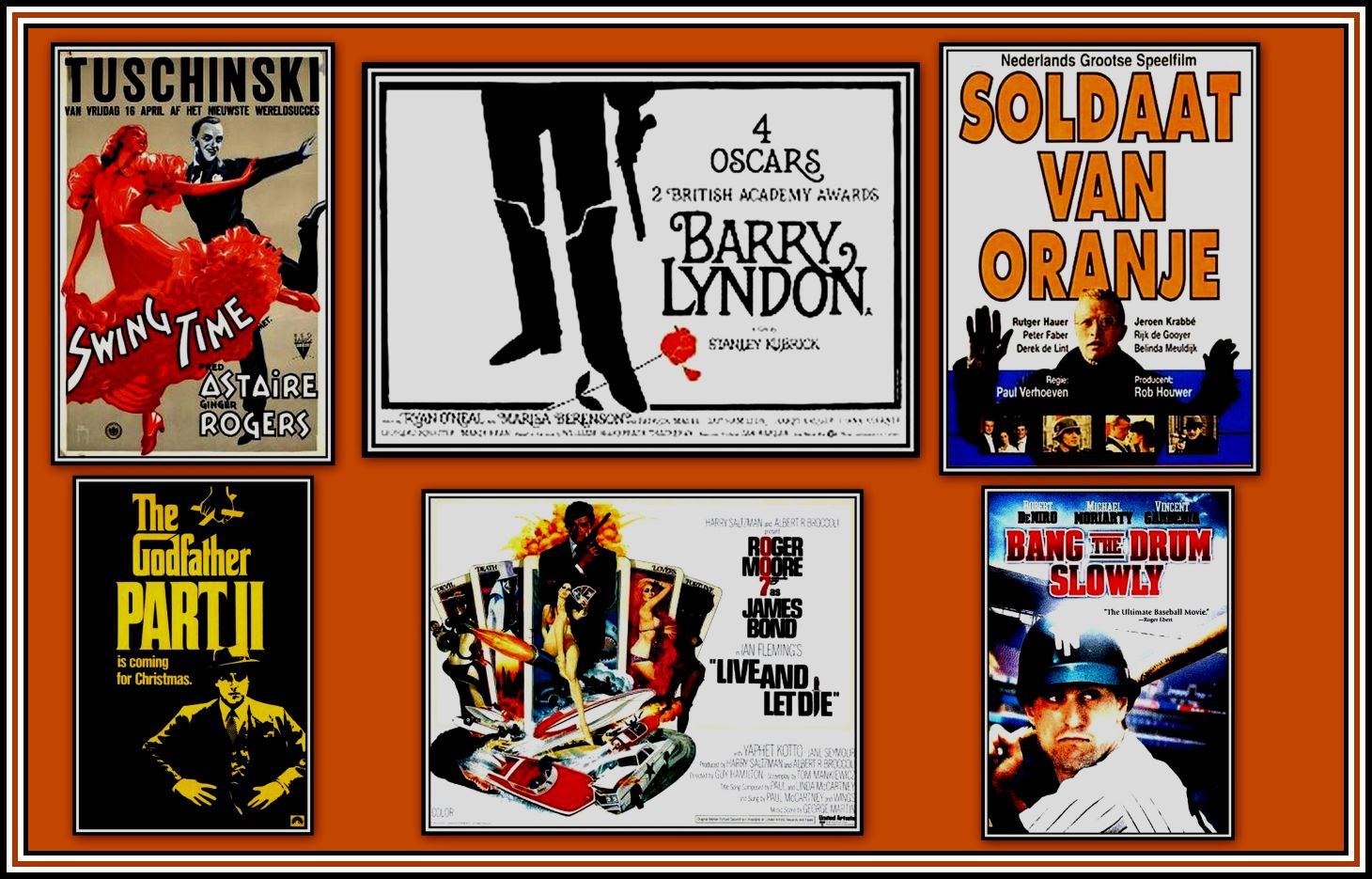 Posters of some films that I saw at the Theater Tuschinski
Posters of some films that I saw at the Theater Tuschinski
The last film that I went to see at the Theater Tuschinki was The Godfather Part II. I say went to see and not saw since I had gone to see it with three friends after having eaten a huge quantity of eel. Eel is a fatty bony fish and soon after the film began I began to feel extremely nauseous. We were seated in the front row of the side seats on the left of the Upper Circle. I decided that I had better leave the auditorium since I was beginning to feel dizzy. A short time afterwards, one of my friends came out to say that she also felt ill. We decided to leave. The cold night air must have helped us recover as we soon began to feel better. I always felt that this was a somewhat unfortunate incident to have marred my last visit to the Theater.
-oOo-
Once the ownership of the Theater Tuschinski passed to Pathé, a huge restoration process was begun involving both the interior and exterior in order to return the building to its former glory. The renovation was undertaken by Rappange & Partners Architecten b.v. and was begun in 1998 and completed in 2002. This process is documented in the book, Theater Tuschinski, Restoration of a Dream, written by Bram Rutgers (co-author Kees Doornenbal) and is available in both Dutch and English.
-oOo-
THEATER TUSCHINSKI AFTER RESTORATION
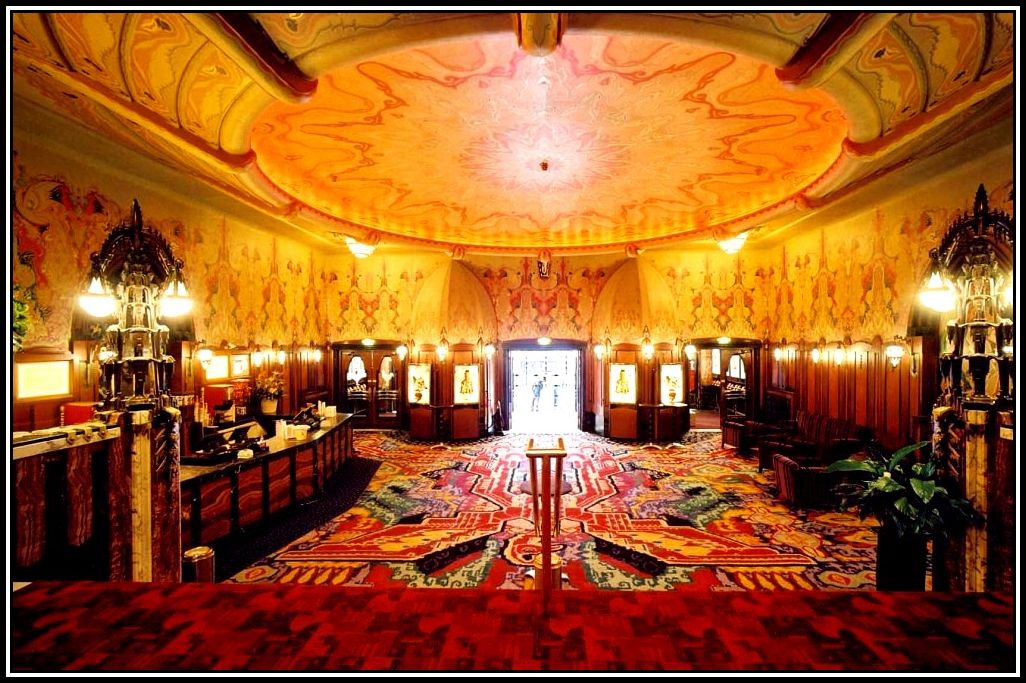 The Foyer after restoration by Rappange & Partners Architecten b.v.
The Foyer after restoration by Rappange & Partners Architecten b.v.
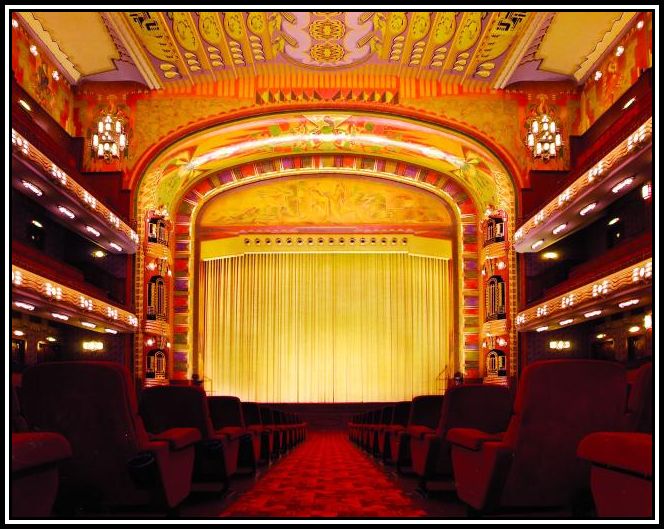 Note the new and more comfortable seating in the restored Main Auditorium
Note the new and more comfortable seating in the restored Main Auditorium
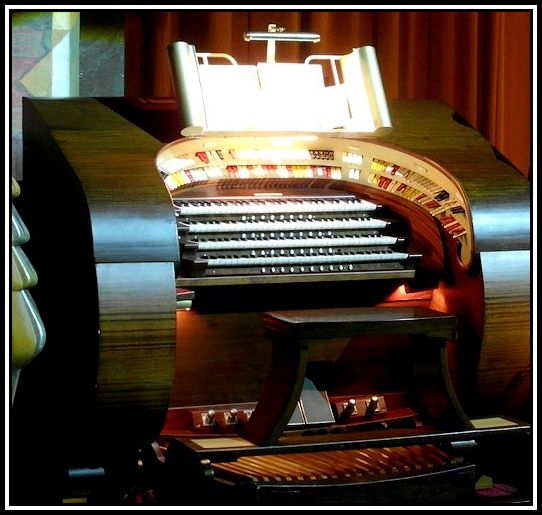 The Strunk-Wurlitzer Organ Today
The Strunk-Wurlitzer Organ Today
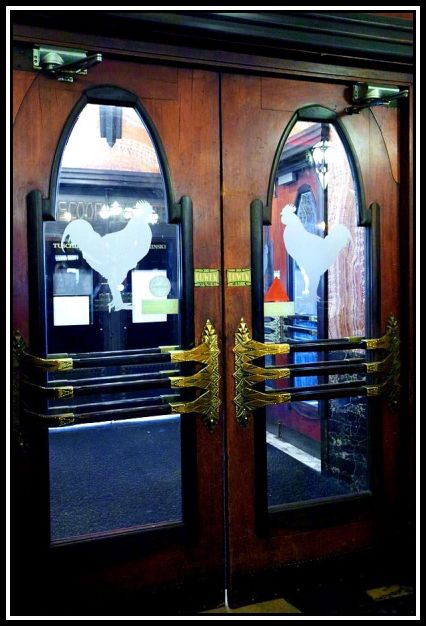 The Pathé Logo now appears on the Entrance Doors to the Cinema, which now has Six Screens
The Pathé Logo now appears on the Entrance Doors to the Cinema, which now has Six Screens
-oOo-
There are a number of other Theatre Organs installed in The Netherlands and for information about them, I recommend that the reader visit the following websites:
Nederlandseorgelfederatie (NOF)
De Website van de Lady Compton Haarlem
Theater Tuschinski: De Onmogelijke eisen
I would also like the direct the reader’s attention to the website of the architects that undertook the restoration of the Tuschinski Theater, Rappange & Partners Archetecten b.v. and to the book, Theater Tuschinski by Bram Rutgers.
-oOo-
ACKNOWLEDGEMENTS
I would like to thank those that helped to produce this page. I would like to offer special thanks to Mr. Paul J.A. van Lett and Mr. Peter Koppe of the Nederlandse Orgel Federatie (NOF) for their kindness and help and for sending information about the theatre and organs. I would also like to thank Mr. Peter Koppe for allowing the musical piece played by Pierre Palla to appear here and Mr. Paul J.A. van Lett for allowing the photograph of the silent film screening of December 2014. I would also like to thank Mr. Jacques Lassarre, Mr. Bernardo Contopoulos, Mr. Joe Ay for allowing their photographs to appear here and also to Tipping the Scales. Finally, special thanks are given to Mr. Roloff de Jeu for allowing his photographs to appear here and the information that he sent.
-oOo-
——-oooOOOooo——-
Click here to GO to PAGE SIXof PART TWO: WURLITZER ORGANS IN FRANCE
——oooOOOooo——
Click here to return to PAGE FOUR of PART TWO: WURITZER ORGANS IN SCOTLAND
——oooOOOooo——
Click here to return to THE THEATRE ORGAN HOME PAGE
——oooOOOooo——
Click here to go to the TABLE OF CONTENTS
——oooOOOooo——

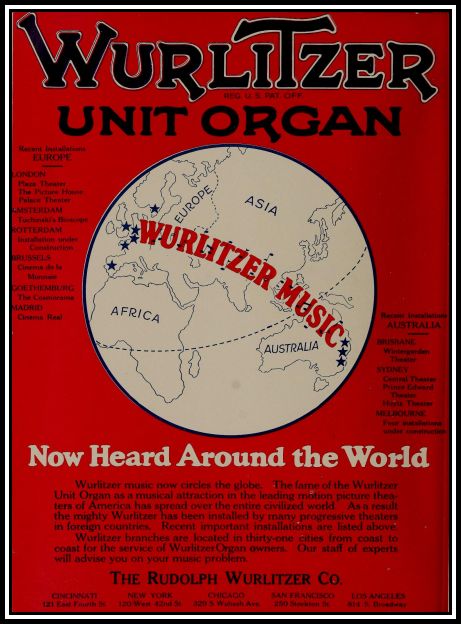
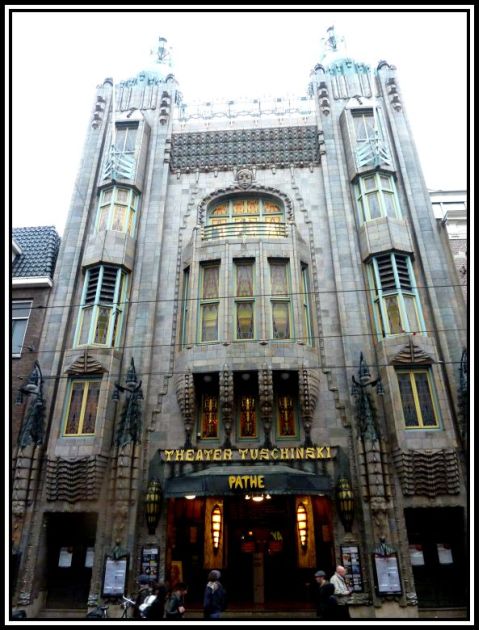
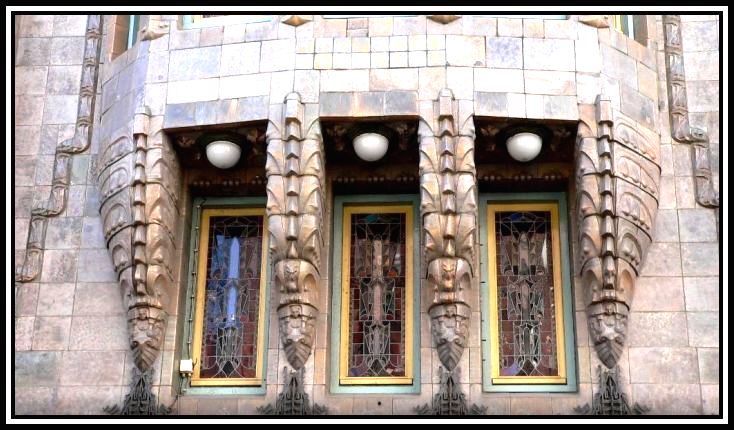
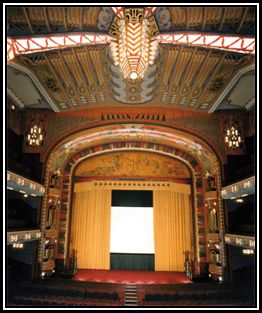
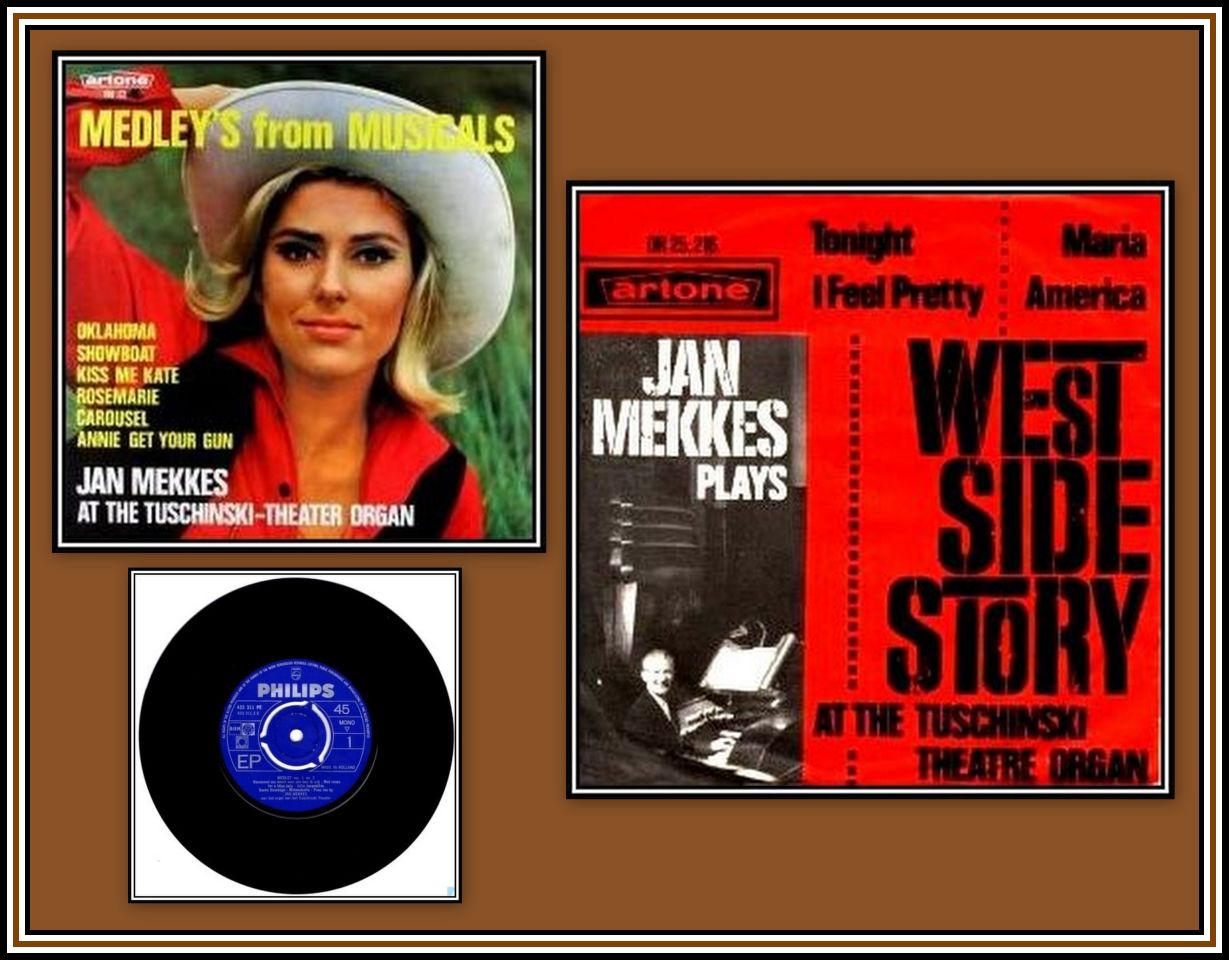
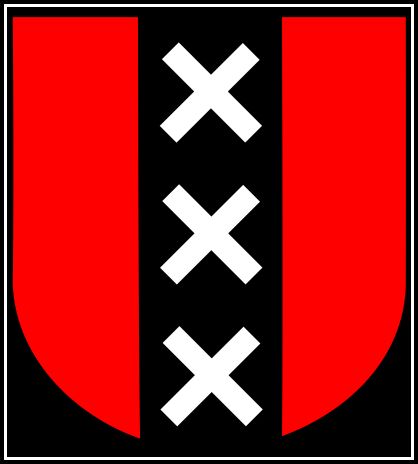
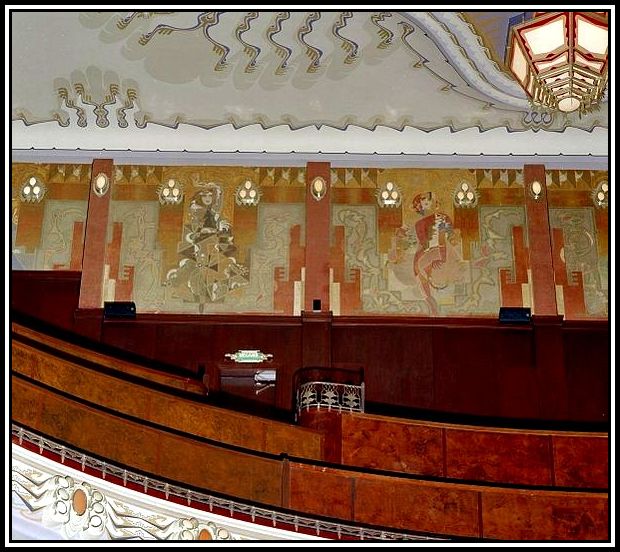
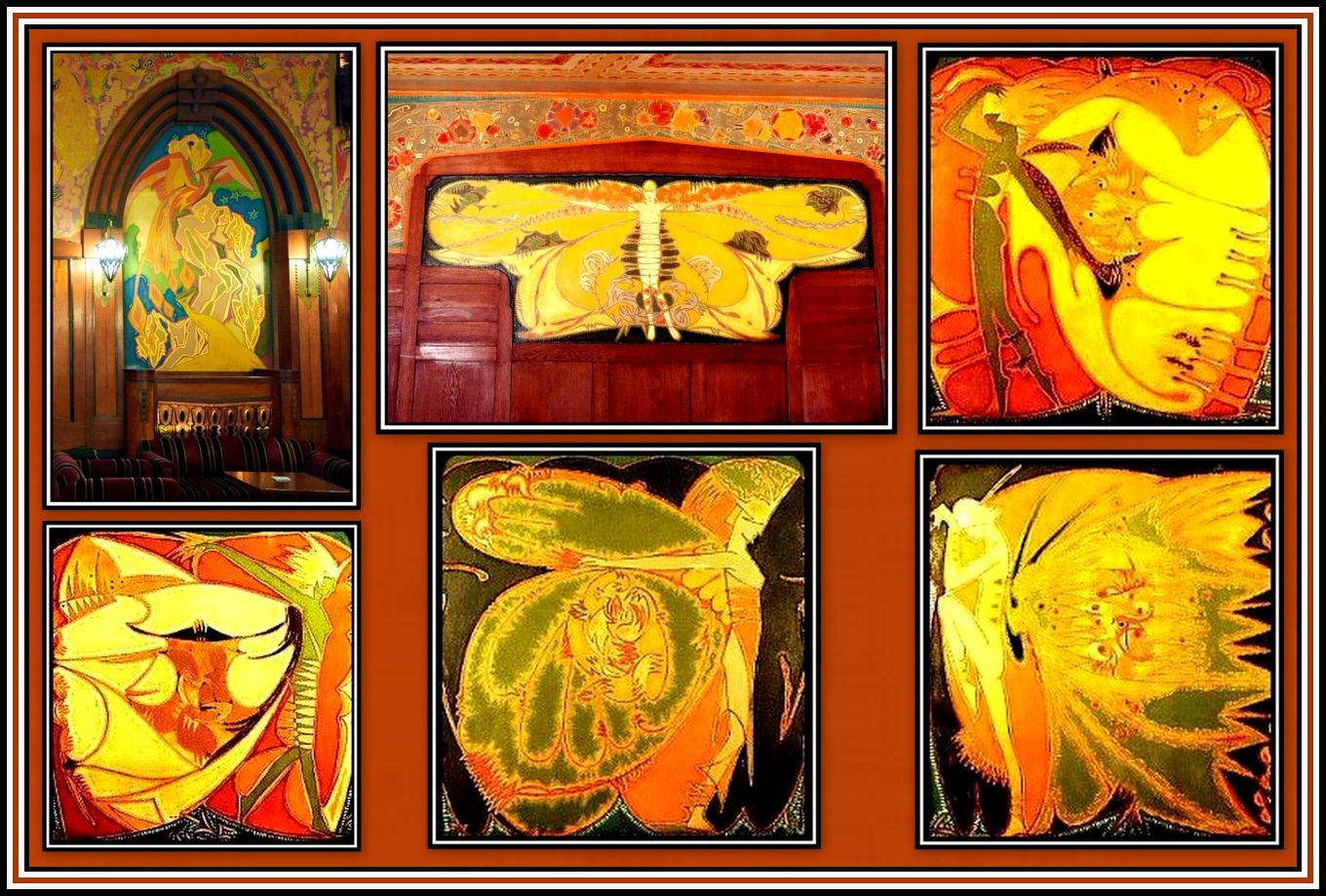
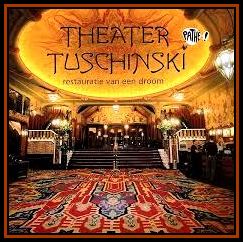
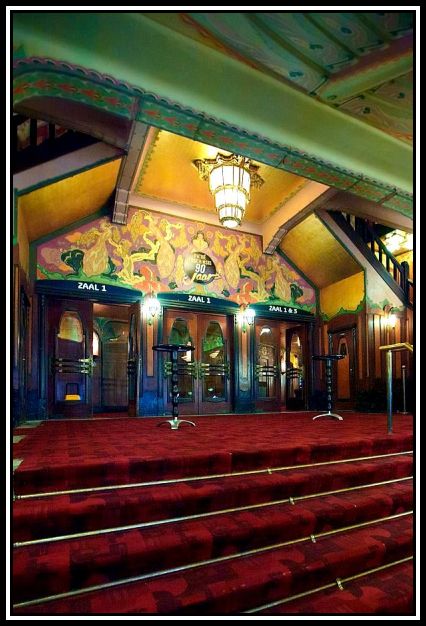
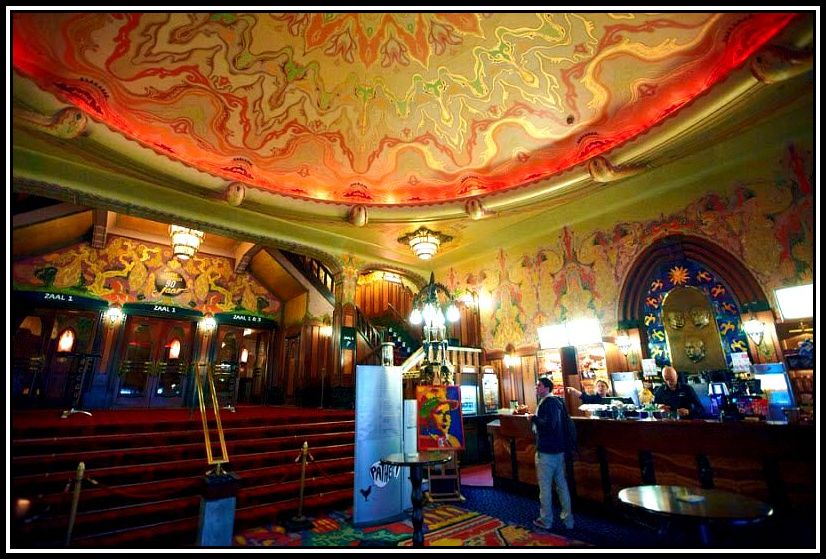
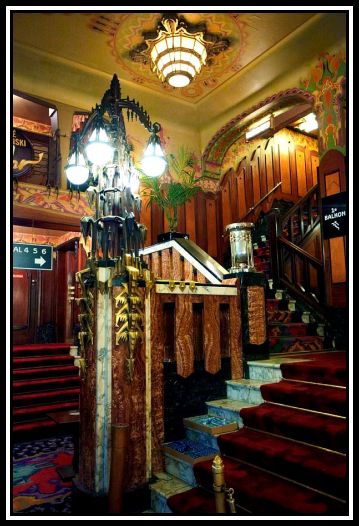
I was most struck by the grandeur, opulence and beauty of the interior of the Theater Tuschinski. Quite overwhelming. The outside is magnificent – it blends in so well with the other buildings. And yet remains unique. The building should remain a tribute to Mr Tuschinski and his family who perished in the most evil manner.
Unfortunately, I have not been able to listen to the organist music. There must be something wrong with my computer? As it is not the first time.
Irene
Hello, t,is me again, cinema organs, what a surprise to see len rawle, i spent some months with him in aldershot 2 training battalion of the rasc, len would disappear to play the orhan at the aldershot cinema which was just across the roadf rom tne willems barracks, though very young 18 year olds len was deeply i to organs, he told me he had one at home i believe somewhere in hertfordshire, our paths never crossed again, but obviously he went onto greater things,another memory thanks